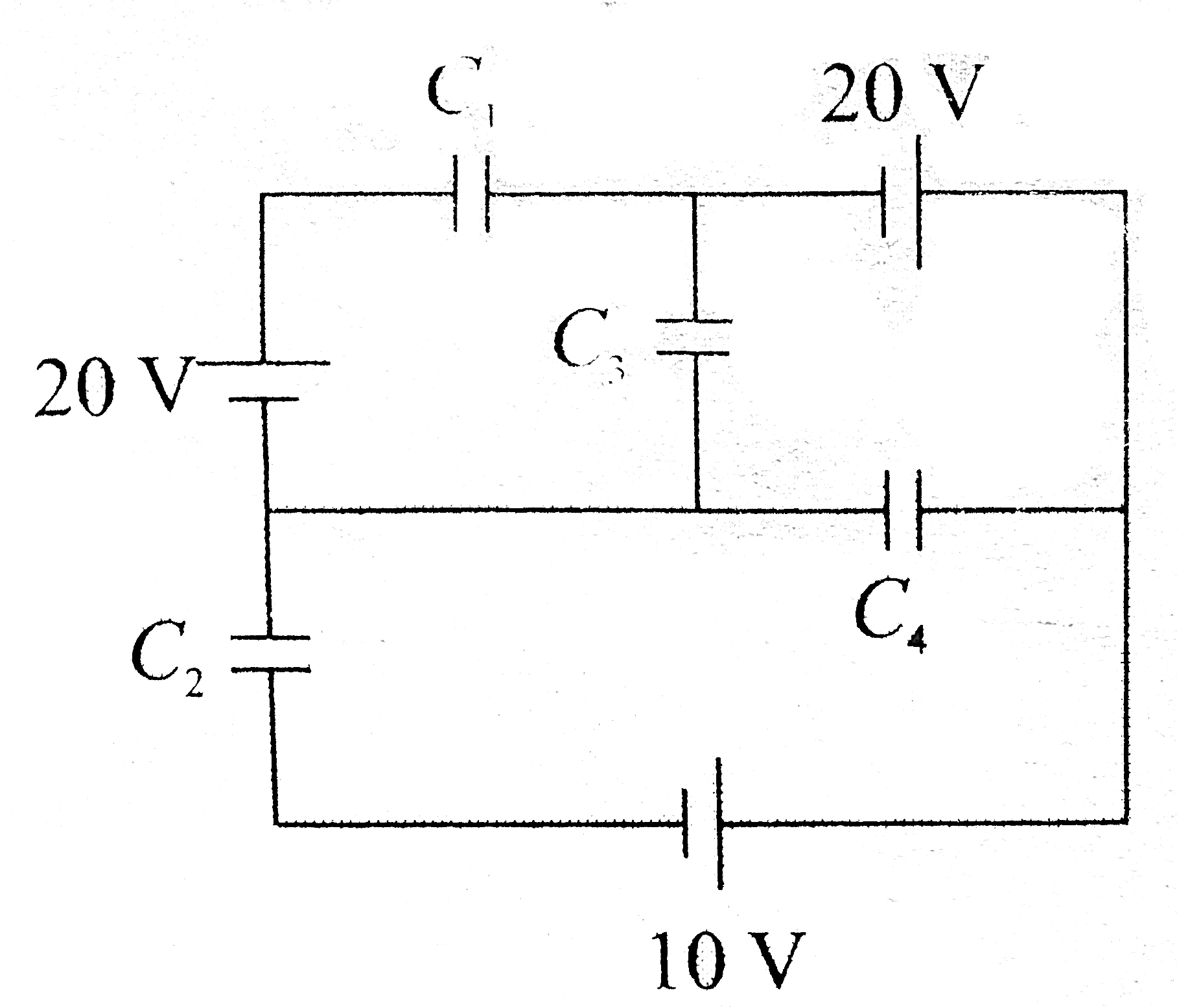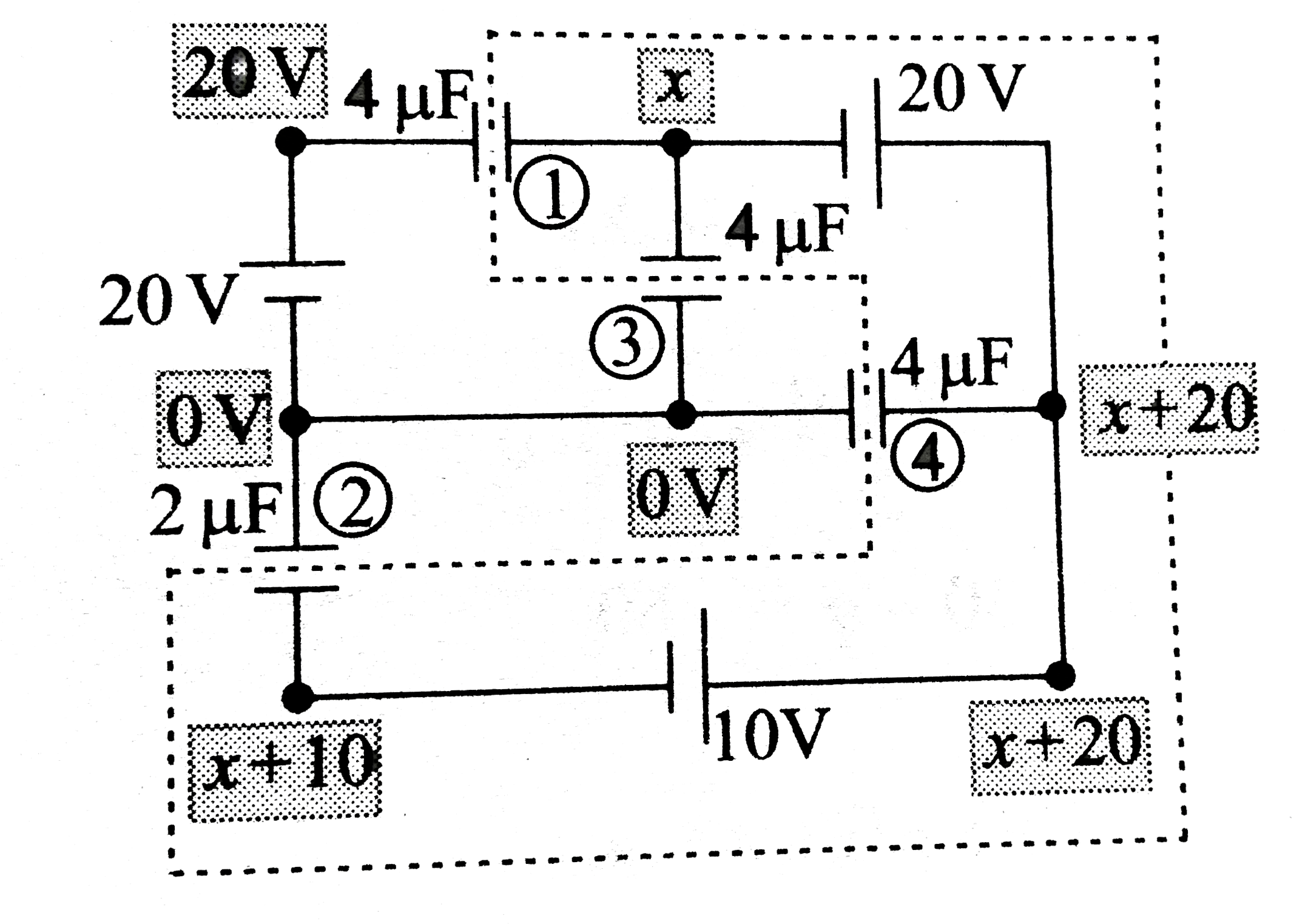Four capacitors C1=8μF,
C2=2μf,C3=6μF, and C4=6,μF are arranged as shown in. Find the charge on all the capacitors in the circuit.
 .
.
The figure shows an isolated system that includes all the capacitor plates isolted from other parts of circuit. We can conclude net sum of charge should be zero.
 .
.
2(x+10)+4(x+20)=6(0−x)+4(x−20)=0
or 4x+20=0 or x=−5V
Hence q1=4[20−(5)]=100μC
q1=2[((−5)+10)−0)]=10μC
q3=6[0−(−5)]=30μC
q4=4[(−5+20)−0]=60μC.
Topper's Solved these Questions
- CAPACITOR AND CAPACITANCEBOOK - CENGAGE PHYSICS ENGLISHCHAPTER - CAPACITOR AND CAPACITANCEEXERCISE - Subjective
24 Videos
- CAPACITOR AND CAPACITANCEBOOK - CENGAGE PHYSICS ENGLISHCHAPTER - CAPACITOR AND CAPACITANCEEXERCISE - Single Correct
49 Videos
- CAPACITOR AND CAPACITANCEBOOK - CENGAGE PHYSICS ENGLISHCHAPTER - CAPACITOR AND CAPACITANCEEXERCISE - Exercise 4.1
13 Videos
- ATOMIC PHYSICSBOOK - CENGAGE PHYSICS ENGLISHCHAPTER - ATOMIC PHYSICSEXERCISE - ddp.4.3
15 Videos
- CENGAGE PHYSICS DPPBOOK - CENGAGE PHYSICS ENGLISHCHAPTER - CENGAGE PHYSICS DPPEXERCISE - subjective type
51 Videos
Similar Questions
Find the charges on 6μF and 4μF capacitors

View SolutionThe charge on 3μF capacitor shown in the figure is

View SolutionThe charge on the 4μF capacitor in the steady state is

View SolutionIn the circuit shown below, the charge on the 60μF capacitor is

View SolutionThe charge deposited on 4μF capacitor in the given circuit is:

View SolutionThree capacitors C1=6μF,C2=12μF and C3=20μF are connected to a 100 V battery, as shown in figure below:

(i) Charge on each plate of capacitor C1.
(ii) Electrostatic potential energy stored in capacitor C3.
View SolutionFind the change on the capacity C=1μF in the circuit shown in the figure .

View SolutionThree capacitors C1=3μF,C2=6μFandC3=10μF are connected to a 50 V battery as shown in the figure below:

Calculate :
The charge on C1
View SolutionIn the ciruit shown in, C=6μF. The charge stored in the capacitor of capacity C is
 .
.
View SolutionIn the ciruit shown in, C=6μF. The charge stored in the capacitor of capacity C is
 .
.
View Solution
